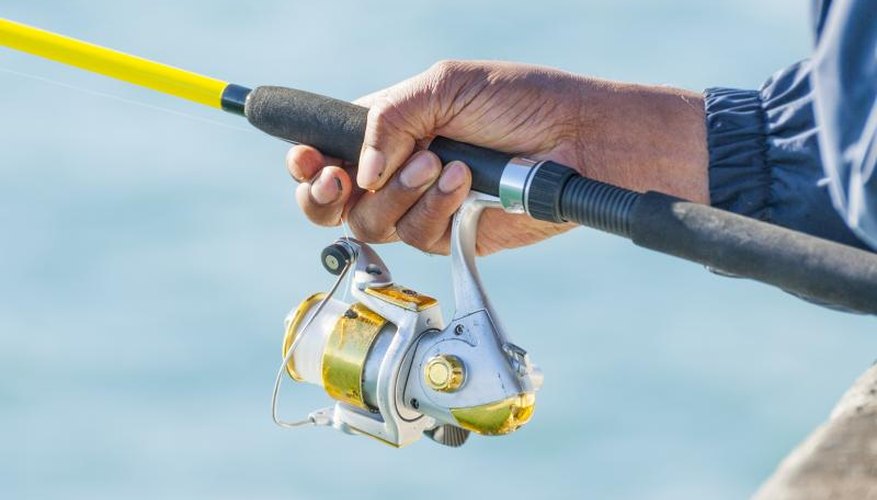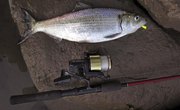
Tiger muskellunge -- sometimes called tiger muskie -- are far from easy to catch. These sterile hybrids between muskellunge and northern pike are rare in nature, but they have been raised in hatcheries and stocked in many lakes and reservoirs across the northern United States. Their elusive nature and ability to reach sizes in excess of 40 pounds makes them one of the most sought-after game fish in the waters they call home.
Finding Fish
Tiger muskies are sometimes called the "fish of a thousand casts," and it usually takes time and effort to catch these fish. Choosing an ideal fishing location can save time, and it's important to remember that muskies are ambush feeders. They use underwater cover to hide, and then rush out to quickly engulf their prey. Shallow bays and backwaters are their preferred habitat, though they can also be found in deeper water in large lakes. Muskies often hide around logs and fallen trees, along the edges of weed beds or right at the top of submerged weeds. They can also utilize rocky cover, especially steep drop-offs and underwater shelves. Summer is the best season for muskie fishing.
Lure Selection
Suckers, pikeminnows and other fish make up the bulk of tiger muskies' diet, and minnow-imitating lures typically work best. Floating and diving crankbaits measuring 8 to 10 inches are common, with some anglers using lures up to 12 inches long. Extra-large spinners, spoons and bucktails can also be effective. The specific tiger muskie diet varies depending on what's available in a particular lake, so be prepared to choose a lure that mimics native fish. If you're fishing in a lake with a large perch population, for example, it's a good idea to have some perch-colored lures handy. Silver and white are good catch-all colors, imitating a wide range of baitfish.
Presentation
Because tiger muskies are solitary fish, often spread out across a wide area of most lakes and reservoirs, many anglers use trolling as a way to more efficiently cover water in search of fish. Trolling involves dragging one or more lures behind a boat while moving at a low speed. For those who prefer to cast and retrieve, an effective method involves casting repeatedly to individual pieces of cover like weed beds and submerged timber, and then moving on to another spot after a dozen or so casts. A simple, straight retrieve works well for most muskie lures, but you can also experiment with stop-and-start retrieves, adding brief pauses and twitches as you bring in the lure.
Tackle Considerations
If you're lucky enough to hook a tiger muskie, getting the fish into your boat is another challenge altogether. Muskies have sharp teeth and great endurance, allowing them to cut or break the line before being reeled in. To put the odds in your favor, use a heavy rod with a stout backbone, and spool your reel with at least 20-pound test line. Monofilament line is commonly used, and it has the ability to stretch slightly under pressure, which helps prevent breaking. Braided line is also an option. Braided lines don't stretch, but they provide much greater strength at a smaller diameter. A steel leader is usually used between the lure and main line to keep muskies from cutting the line with their teeth.
References
Writer Bio
When Richard Corrigan isn't writing about the outdoors, he's probably outside experiencing them firsthand. Since starting out as a writer in 2009, he has written for USA Today, the National Parks Foundation and LIVESTRONG.com, among many others, and enjoys combining his love of writing with his passion for hiking, biking, camping and fishing.



